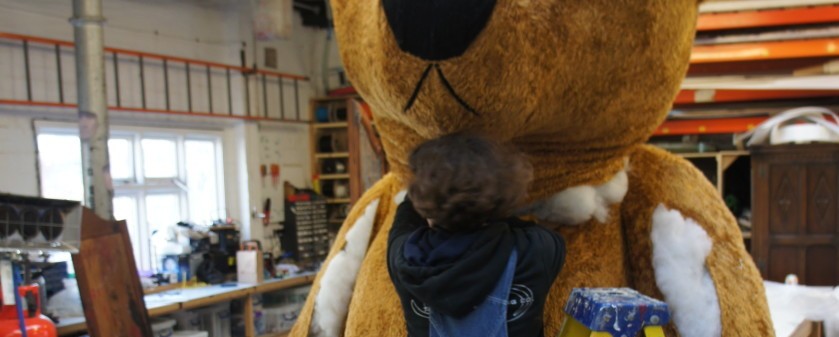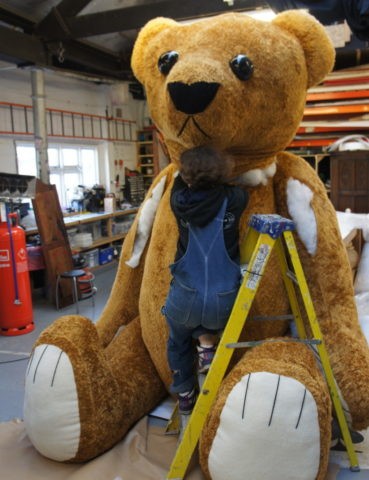Some top tips on how to make selling easy

All of us have to sell something for a living. Those of us who are self employed, freelancing or running a business, whatever you want to call it, we have to sell something to cover our costs and put bread on the table. One of the most difficult things about selling things for a living, is the bit where you have to actually sell.
You have to offer your product/service/teddy bear and ask for money for it. And that asking for the money bit can be difficult. It’s especially awkward if you’ve previously had a “real” job where money just magically turned up in your bank account each month. You didn’t have to ask for it, it was just there, for as long as you had the job.
The bad thing about running your own business is that you have to ask for the money. The good thing is that you often get it. And you if you have the right brand of teddy bears to sell, price them correctly and ask the right people often enough, you can get way more money than that amount which used to magically end up in your bank account when you had a job. But you have to ask.
Here are some selling tips on how to ask.
Selling tips with – the presumptive close
One of the best ways to to sell is to assume that your client wants to buy. That’s why I’ve talked a lot about getting you really confident about what you sell, so that you can safely assume that your client would want to buy your totally brilliant teddy bears.
In the presumptive close, you can say things like “So, shall we make a date to get started?” Top trick here – have your diary on the table in front of you if possible, so you can look at your diary as you’re saying this, rather than reaching in your bag to find it. If you use an electronic diary, instead of reaching for your phone, which might make it look as if you’re going to text someone, have an ipad/tablet on the table in front of you and with your diary open, so you can go straight to it. Have some other stuff in your diary too, even if you have no work on – you’ve still got other things you can put in your diary, the client won’t read it to see it says “write blog” or “yoga lesson”.
If this sounds too full on, or you can tell that they’re not sure, you can say “Does that sound like a good plan?” This invites them to tell you what they think, so you know where you are with this client, if they’re a yes, no or maybe. You can then plan what to do with the maybe’s.
Avoid chickening out with the proposal
Sometimes what you’re selling is pretty complex.
You might have options for them, you might have to buy in things from other people, or get subcontractors to do something as part of it. Or you might not be totally clear yet about what you want to sell them. So you end the meeting by saying, “I’ll write all this up and send you a proposal.” And this is much easier isn’t it? You can go back to your desk, do a proposal, think about it a bit more, and put together your price.
But you haven’t quoted them a price, or told them what you think they need, so they’ve not got chance to form a buying intention. While you’ve got them there, they might well have a warm fuzzy feeling that this teddy bear might be just the thing for them, so you want them to have made an emotional commitment to buying something.
You need to give them enough to decide there and then, even if you don’t have all the details yet.
Give them some idea of what it could be like.
The conversation might be something like this:
You: Well, what would be really great would be if we could come in and do the teddy bear legs first. That would take about 2 weeks for that stage and you’d have to clear about 2m of space. And then we could move on to the main build of the teddy bear body, say, by August. Which would mean that we could do the teddy bear arms and head by October. And you’d have your teddy bear before Christmas, which would fit in with your soft launch dates. I’d have to check with my subcontractor, and firm up the prices, but you’d be looking at around £7500.
[Subtext – you’re thinking through all the parts of the job on your feet, making it all sound easy, fitting in with what they do, and giving them a very rough figure for the price]
Prospective client: Finishing before Christmas would be good, as we have a big rush before the holidays. How do you bill, I mean, would we have to pay for all this upfront
[Subtext – I like this, but I’m worried about cashflow, £7500 is a lot of money]
You: Oh, that’s fine. We split the payment into 4, 25% upfront so I can pay the subcontractor, 25% when we’ve finished the first stage, and you pay the final 50% when you’re completely happy. Clients like it this way, as it’s easier on their cashflow when they don’t have to pay it all upfront.
[Subtext – you’re not greedy, the upfront money is just to pay the subcontractor, you want to make them happy, and you understand about cashflow.]
Prospective client: Well that all sounds good, but I’m going to have to talk to my business partner about this.
You: That’s fine. I want to think about the leg constructive technology a bit more, as I’m getting some good ideas about how to do that. I’ll send you a full proposal and some definite costs. [Looks at diary] I can get all the costings over to you by this Thursday, so you know exactly how everything will work in practice. How about we meet up next week, maybe with your business partner, and we can confirm then.
[Subtext – I’m not fazed by this business partner that you’ve never mentioned before, and I’m busy thinking about how to do a good job]
Do you see what’s happening here. You’re talking in definite terms, setting out a clear agenda for how to move forward. You’re gently guiding your client in what to do. You’re not being pushy – she can still ask questions and decide not to buy, but you’re talking about it as if it’s going to happen and that you’re excited about it.
Note that there’s nothing there about “if you think that’s a good idea” or “if you want to”. It’s very clear.
Making up the numbers as you go along
You’ve also had to make up this number. In our example here, it’s £7500. Your figure could be £200 or £20,000, depending on what you do, but get in the habit of judging the right ball park figure at an early stage.
I often go through various buying scenarios with clients, what would it cost if I wanted to buy X, what about if I wanted 3 Xs, are there options to have this as as well? And then we’ll check how many days it would take to do X. And what information you’d need to get from the client in the first place, so you can build that into your conversation early on.
That way, you have a menu to draw on, so you know what components you need to slot together like lego to make your rough proposal in your head. You might have to change it when you sit down and do all the sums, but if you’ve given them a rough figure, you can make it more or less fit that rough figure.
Photo credit – This is a real giant teddy bear, made by the guys at Plunge Productions who make all kind of giant sculptures, props and amazing imaginative delights.
Here is the full teddy bear under construction, in case you don’t believe me



